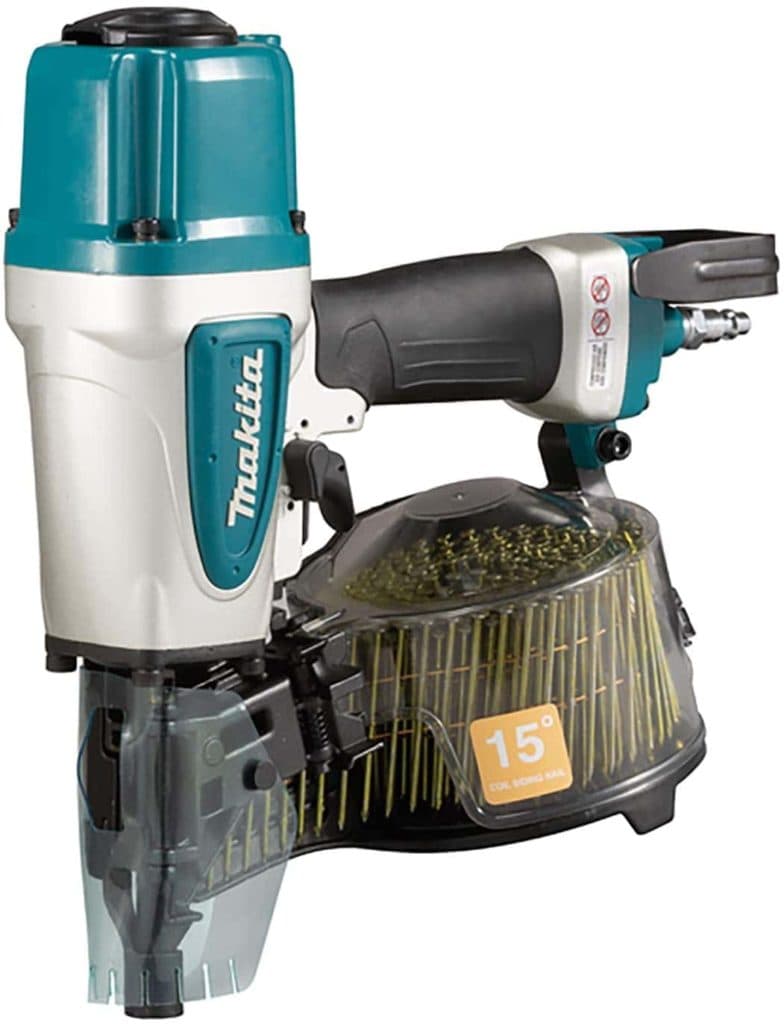22 Different Types of Nail Guns & Their Uses (With Pictures)
-
- Last updated:
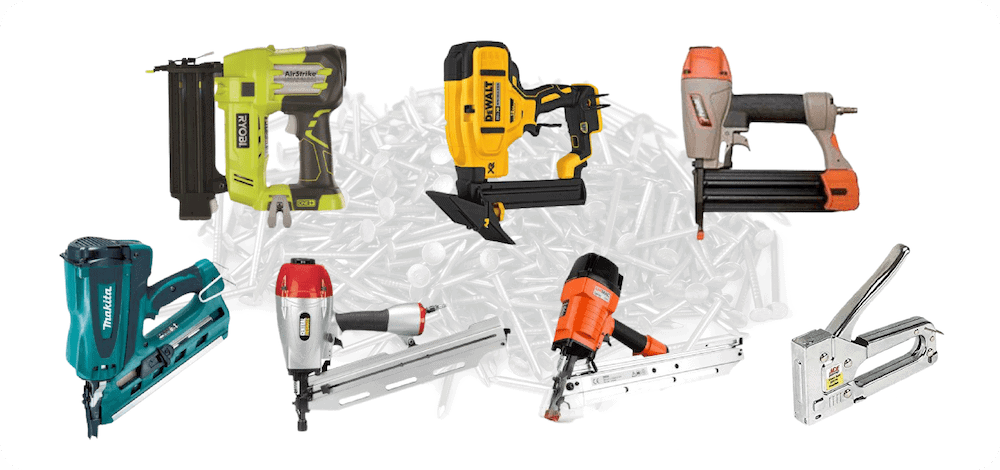

Although construction workers and homeowners still use hammers and nails for various projects, nail guns are efficient devices that minimize fatigue and increase productivity. However, Nail guns are designed with specialized purposes in mind, and using the wrong nail gun type can ruin your work. We compiled a comprehensive list of 22 types of nail guns, as well as their ideal uses and pictures. Read on to find out more.

The 22 Different Types of Nail Guns & Their Uses
Framing Nailers
Framing nailers are named after their intended use: building housing frames. The guns drive long nails deep into dense lumber, allowing them to construct sturdy and durable frames. There are three types of framing nailers:
1. Pneumatic Framing Nailer
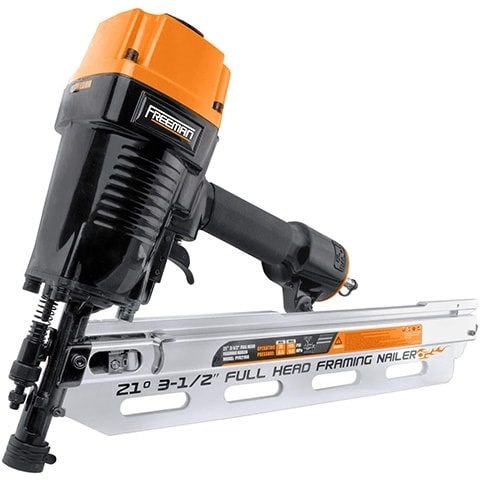
A pneumatic framing nailer is powered by an air compressor connected to a hose. It is the most common framing nail gun since it is powerful and lightweight. Its only downside is that movement is inhibited by the length of the hose attached.
2. Cordless Framing Nail Gun

As the name suggests, a cordless framing nail gun uses battery power. Most models use a 20 Volt lithium-ion battery with a brushless motor. This cordless design makes the nailer convenient and portable, but you will need to replace the batteries when needed.
3. Gas Framing Nail Gun
A gas-framing nail gun drives nails into lumber whenever an electric jolt ignites the gas cartridge within. It was prevalent before the cordless framing nail gun was invented since it is more convenient and portable than a pneumatic framing nailer. If you use a gas nail gun, remember to carry enough gas cartridges to accomplish your job.

Roofing Nail Guns
Roofing nail guns are designed for roofing jobs. Although they are powerful, they are not as powerful as a framing nailer since the nails do not need to go in as deep. There are two main types of roofing nail guns.
4. Pneumatic Roofing Nail Gun
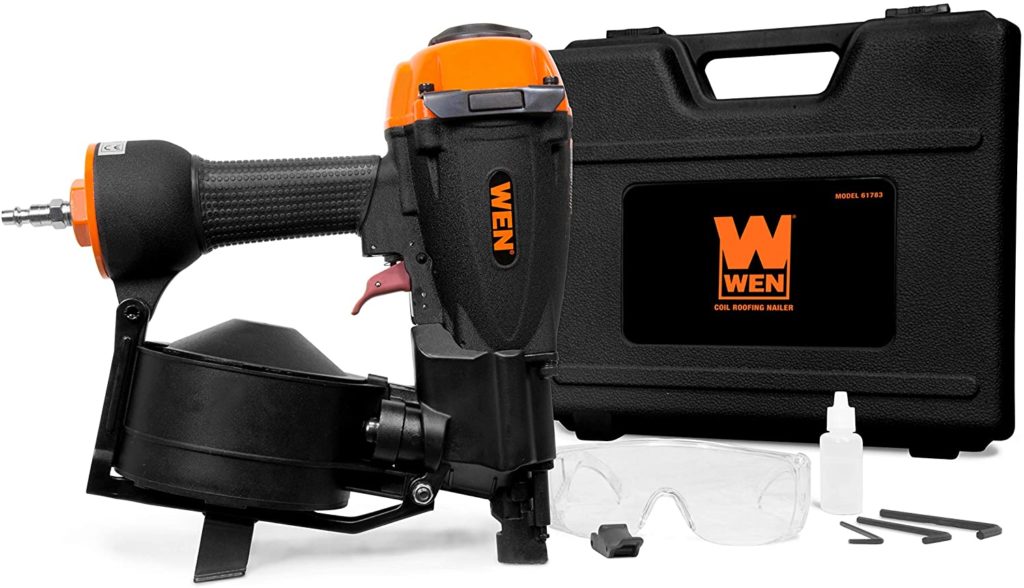
Like a pneumatic framing nailer, a pneumatic roofing nail gun uses an air compressor to punch nails into the surface. It’s powerful but less portable since it needs to be connected to an air compressor.
5. Cordless Roofing Nail Gun
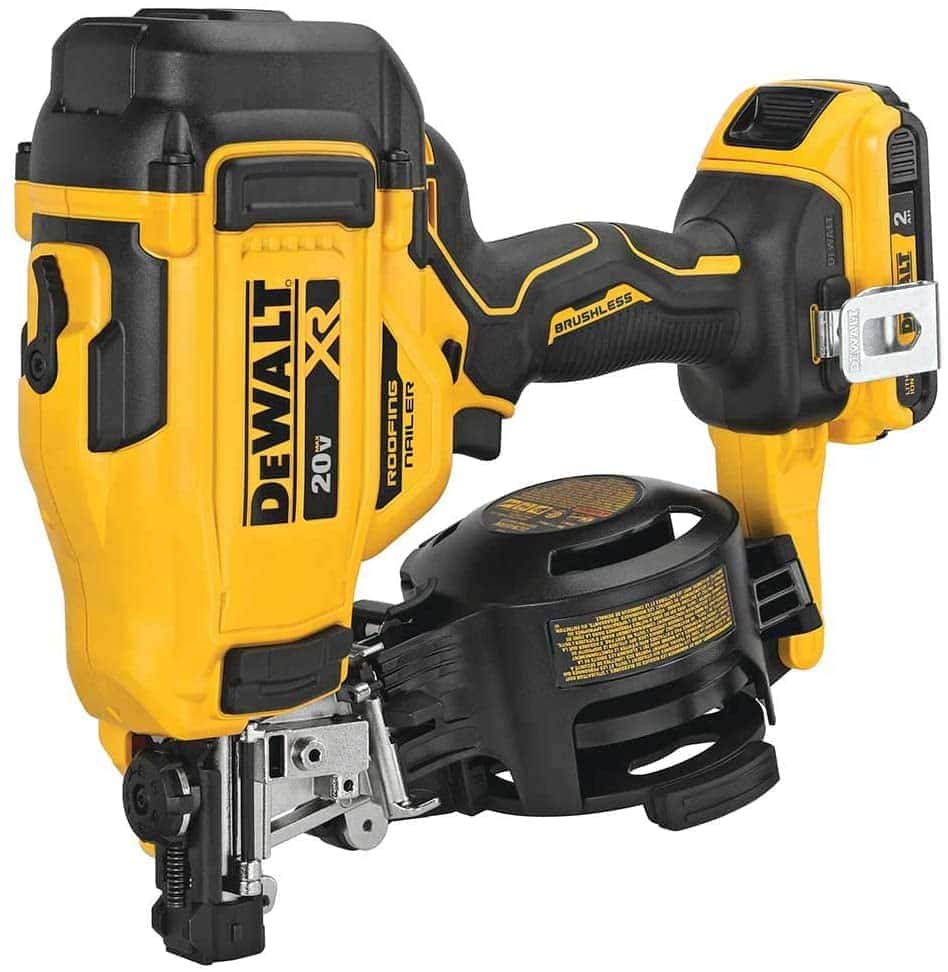
Since roofing nail guns are used in higher elevations, maneuverability is vital. Cordless roofing nail guns are more maneuverable and portable since they are powered by batteries. If you select a cordless roofing nail gun, be sure to purchase extra batteries or cartridges to take with you on the job.

Flooring Nail Guns
Flooring is a special area of carpentry that requires specific skills and specialized tools. The flooring nail gun provides just the right amount of pressure that holds the floor together while still allowing it to expand and contract during changing weather. Here are the three types of flooring nail guns:
6. Pneumatic Flooring Nail Gun
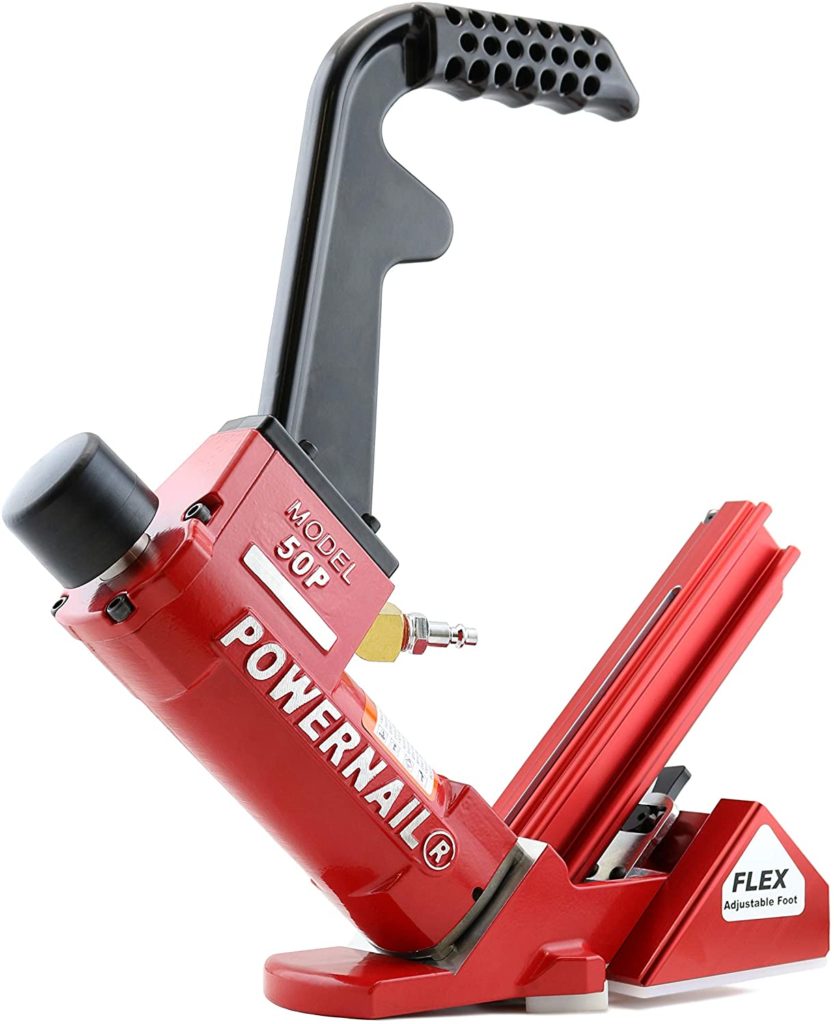
The pneumatic flooring nail gun uses air pressure to create a consistent and powerful punch, driving the nails into the material reliably and forcefully. Although the length of the air hose will limit your reach, you will not need to change batteries or gas cartridges.
7. Cordless Flooring Nail Gun

Cordless flooring nail guns work when an electrical charge ignites the gas cartridge within. It is not as powerful, fast, or reliable as a pneumatic flooring nail gun. You will also need to switch out the gas cartridges throughout the job.
8. Manual Flooring Nail Gun
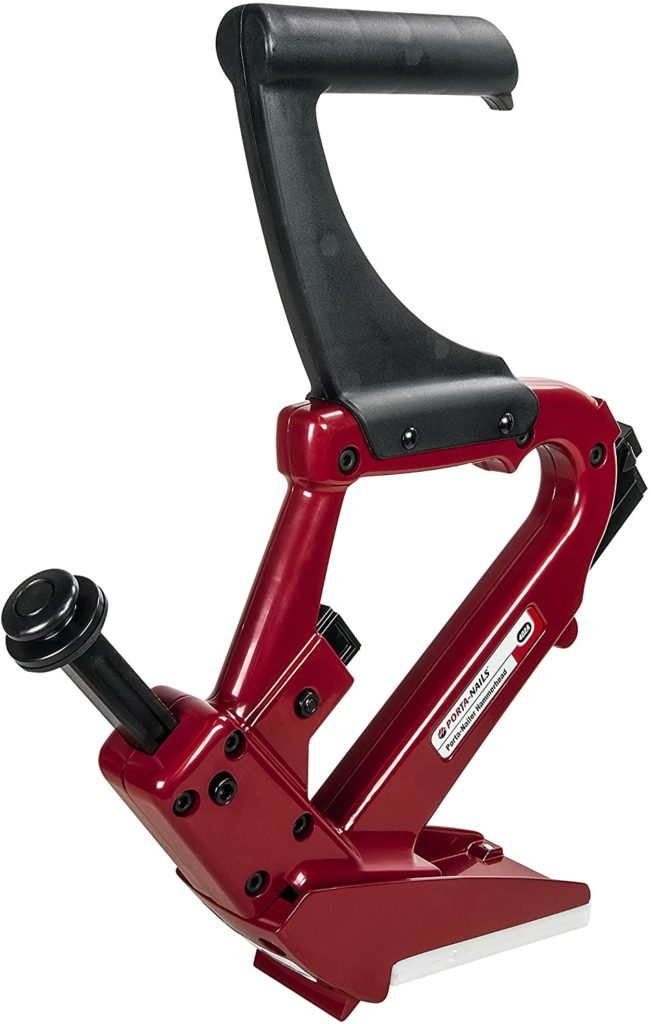
Some people use a manual flooring nail gun because they are more affordable and allow more control over the nail’s depth. They are slower and sometimes more difficult to use than the other two types.

Finish Nail Guns
Finish nail guns are designed for small detailed jobs, such as fastening molding, building furniture, or any other project that requires small nails. Many of the other nail guns on this list are simply too big and powerful for detailed work.
9. Pneumatic Finish Nail Gun
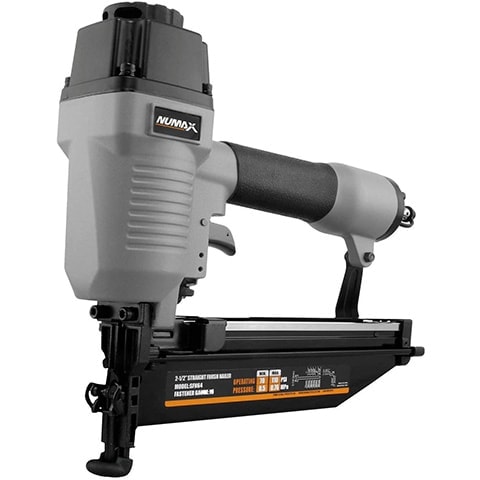
The pneumatic finish nail gun uses an air compressor to provide consistent power. This allows you to create precise detailed finishes. The hose limits your range, and it requires you to move the air compressor at times.
10. Cordless Finish Nail Gun
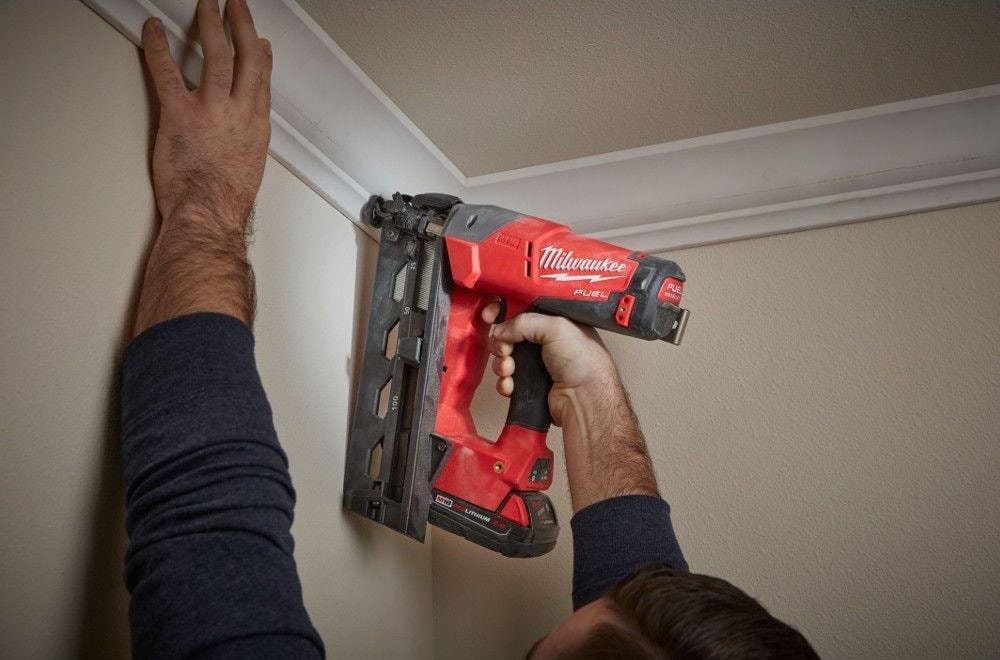
Cordless finish nail guns come in two types: straight and angled. A straight cordless nail gun is used for stapling molding, while the angled cordless nail gun is used for getting into hard-to-reach corners. The cordless design increases maneuverability, but you’ll need to replace the batteries often because they die quickly.

Brad Nail Gun
A brad nail is the smallest nail that is used for cabinets, carpets, and light furniture. Since the nails are so small, they require a specialized brad nailer, which is less powerful than other types.
11. Pneumatic Brad Nail Gun

A pneumatic brad nail gun uses an air compressor to create consistent and reliable pressure for the brads. The recharge time for a pneumatic brad nail gun is very short, and the hose length is less of an issue since it is used for jobs closer in proximity.
12. Cordless Brad Nail Gun
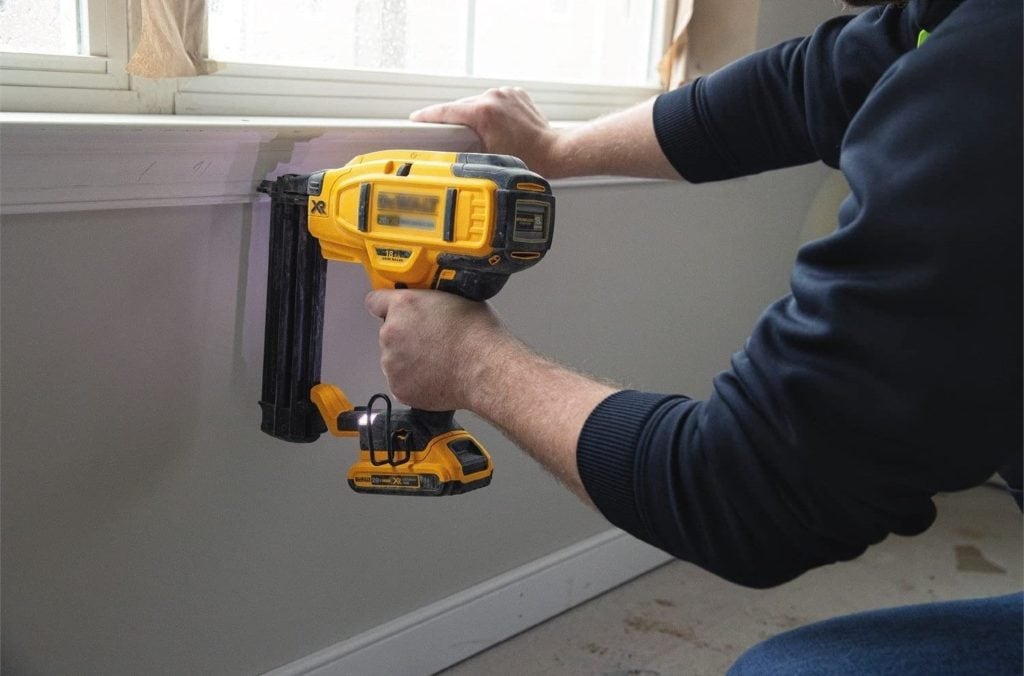
Cordless brad nail guns are battery-operated, allowing the tool to be highly maneuverable. The small size of the bread elongates the lifespan of the batteries, but you will eventually have to change out the old batteries for new ones.

Staple Guns
Staple guns press fasteners or staples, not nails, into surfaces like upholstered furniture and light carpets. Since staple guns do not use nails, they are the smallest nail guns. There are four types of staple guns:
13. Hand-Actuated Staple Guns
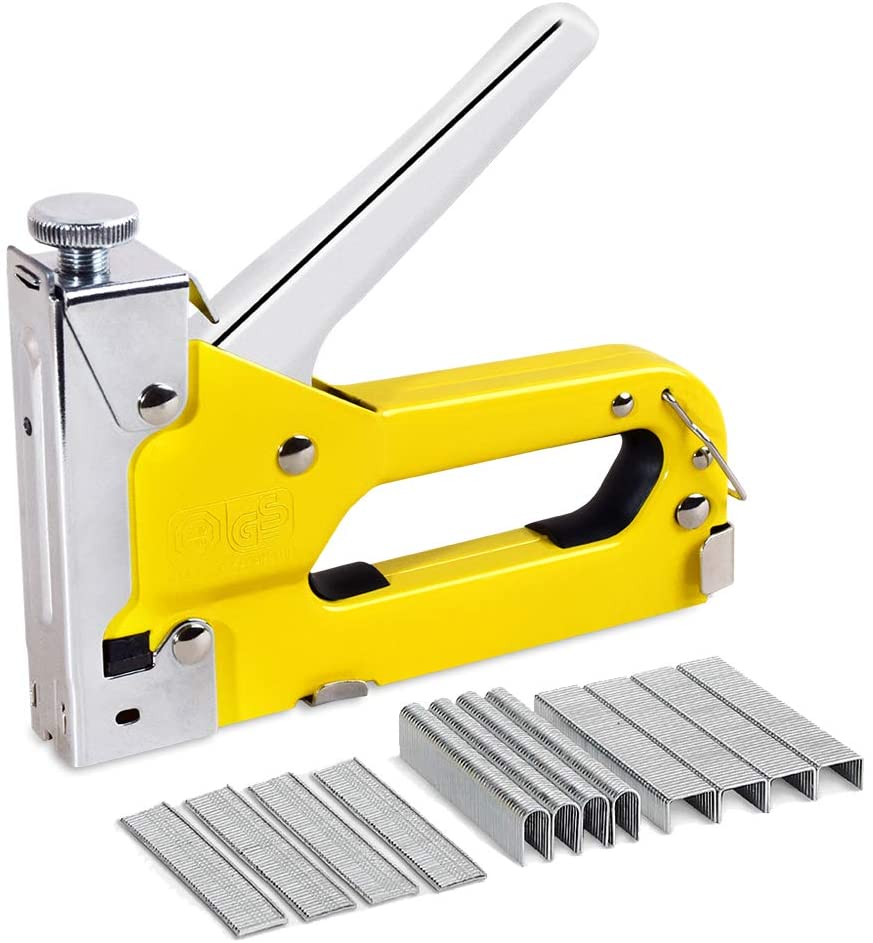
Hand-actuated staple guns are easy to use and inexpensive. They’re ideal for small projects, and most models accept multiple staple sizes.
14. Hammer Staple Guns

Hammer staple guns hammer the staples into place. Although the hammer staple gun is suitable for carpet padding and installation, it is not powerful enough for stabling touch fabrics.
15. Electric Staple Guns
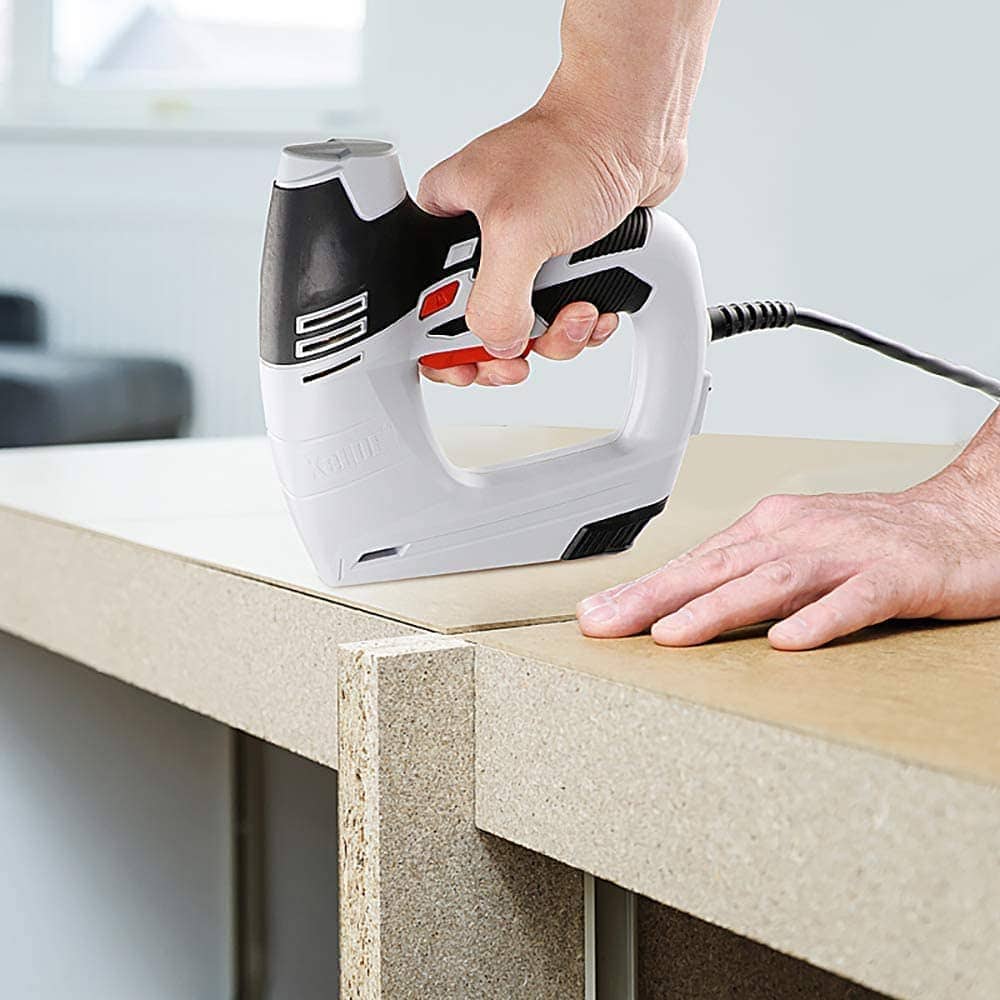
Electric staple guns are incredibly powerful. The downside of an electric staple gun is that it is more expensive than a hand-actuated one.
16. Pneumatic Staple Gun

Staples rarely need an air compressor, but a pneumatic staple gun will do the job faster. Although buying a pneumatic staple gun is not essential for small projects, you can add one to your collection if you own an air compressor.

Pin Nail Gun
A pin nail gun is used for small jobs, such as upholstery projects. Since it’s small and not very powerful, it is great for DIY projects. Like most other nail guns, you can select a pneumatic or electric pin nail gun.
17. Pneumatic Pin Nail Gun

A pneumatic pin nail gun will get your small, detailed jobs done quickly. Some people think the pneumatic pin nail gun is completely unnecessary since detailed jobs are more delicate and don’t require as much power.
18. Electric Pin Nail Gun
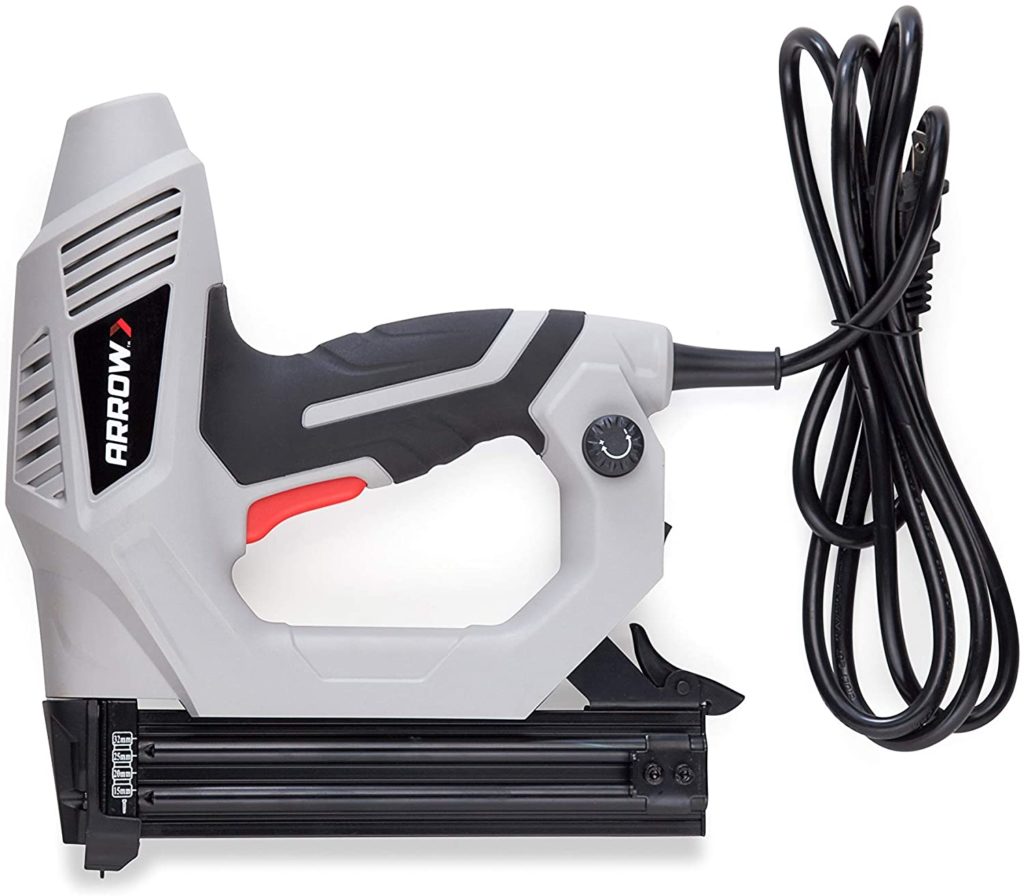
An electric pin nail gun is lightweight, easy to use, and portable. It will allow you to work on your small crafts without an air compressor.

Siding Nailer
A siding nailer is used to nail the siding to your wall. It is different from other nail gun types due to its softer tip.
19. Pneumatic Siding Nailer
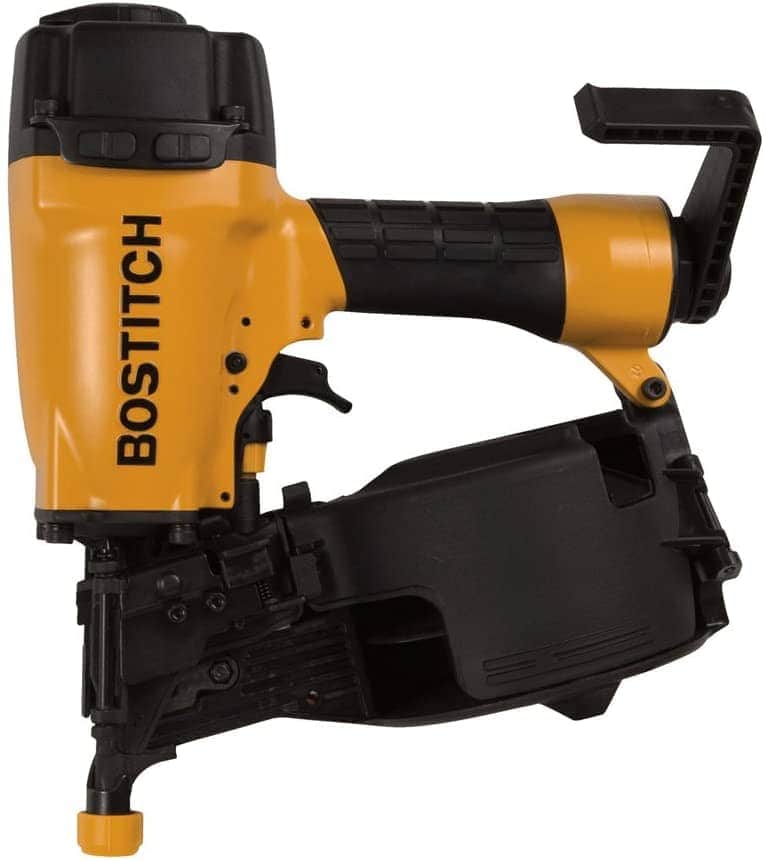
Nailing siding to a wall requires consistent and intense pressure, which makes the pneumatic siding nailer ideal. Although you will be constrained by the length of the air hose, the pressure created by the air compressor is ideal for installing vinyl siding.
20. Electric Siding Nailer
Since you use a siding nailer to attach large sections of siding to a building or home, an electric siding nailer can come in handy. You will not be limited by the length of the air compressor hose, but you will need to replace the batteries frequently.

Specialty Nail Guns
Most nail guns listed above are designed with a specific job in mind, but they can be used for various purposes. The specialty nail guns below are designed for detailed work and are not suitable for most construction projects.
21. Headless Pinners
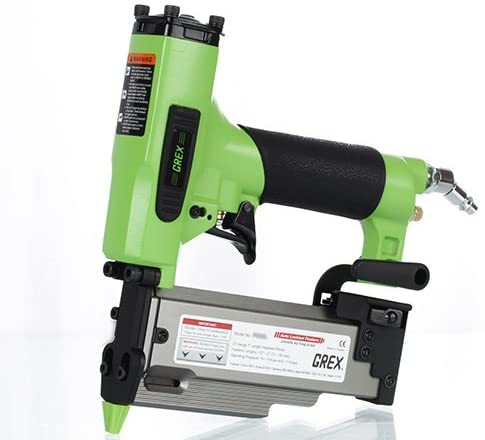
Pins are not nails, and they require a different device to shoot them into a surface. Headless pinners are designed to press pins into picture frames or incredibly thin molding.
22. Palm Nail Guns

A palm nail gun can be held in your palm, hence its name. It is very lightweight, making it ideal for hard-to-reach places. Although they are not very strong, they are convenient and lightweight.
Conclusion
We discussed several types of nail guns, but most homeowners and DIY enthusiasts only need one or two for repairs and renovation projects. However, skilled carpenters may use several, depending on the type and scope of their projects. If you own an air compressor, it’s wise to purchase pneumatic tools since they provide more power than gas-powered or electric models. However, if you work in remote locations, the battery-powered nailers are more practical than dragging a generator and compressor for the pneumatic nail gun.
You might also be interested in:
Featured Image Credit: Christina Richards, Shutterstock
Contents

